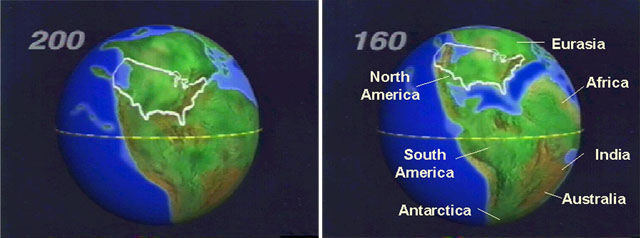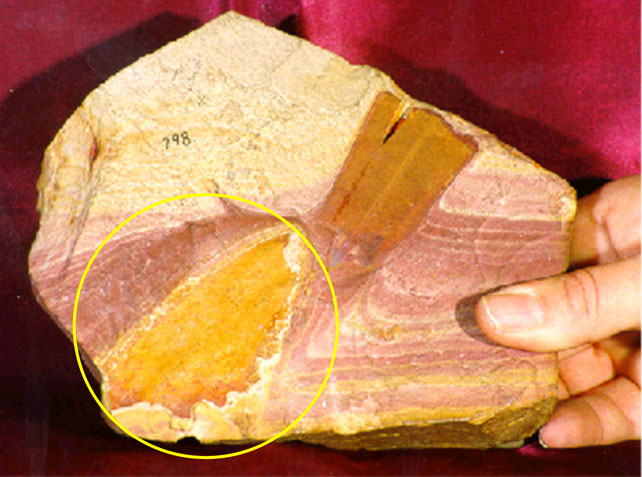
Plate Tectonics Theory Development (Part 2)
Continental Drift
Geologic puzzle: Why do the coastlines of South America and Africa on opposite sides of the Atlantic Ocean seem to fit together? In 1915, German scientist Alfred Wegener proposed that continents could move around on the earth’s surface.
• Wegener suggested that the continents were all together in the geologic past, forming the supercontinent Pangaea.

(Diagrams courtesy of the United States Geological Survey)
Evidence suggested that Pangaea began to break up about 200 million years ago. By 160 million years ago, continents had begun to drift to their present locations. Today’s coastlines of South America and Africa are a match because these two continents were once joined together.
• Evidence supported the hypothesis. Similar fossils were found on both sides of the Atlantic. Glacial features on widely distant continents matched.

Glossopteris fossil (circled) (Photograph by Parvinder Sethi)
This seed fern fossil, called Glossopteris, is one of the many fossils that were found on both sides of the Atlantic Ocean. Scientists could not understand how the seeds could have migrated across the oceans unless the continents were connected by mysterious land bridges or perhaps the oceans were much smaller.
• Continental drift was rejected because no known force could move continents through the seafloors between them.